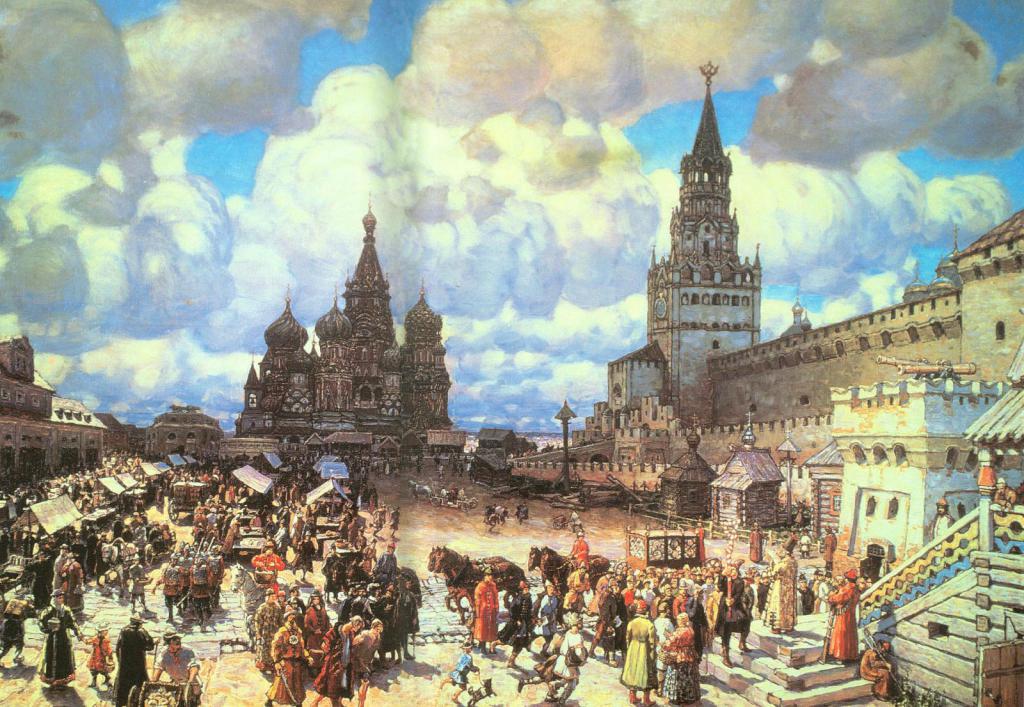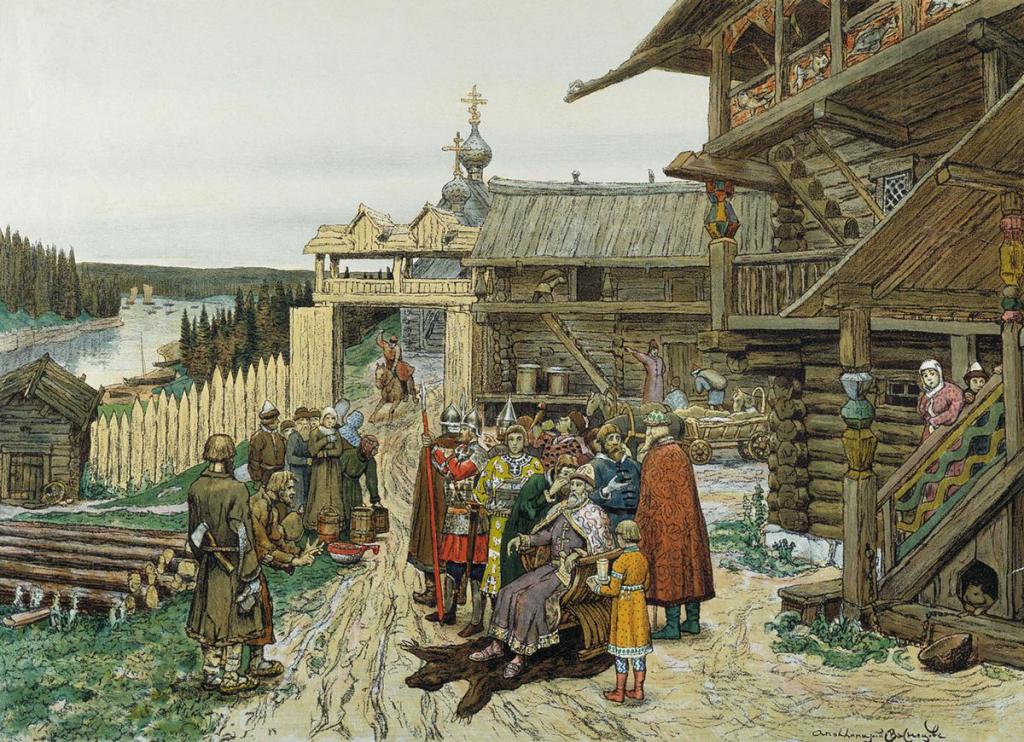Probably everyone knows that in tsarist Russia for a long time (since 1613) the Romanov dynasty ruled. Everyone knows Peter the Great with his truly great reforms (we cannot judge their necessity and correctness), Elizaveta Petrovna is the daughter of the first Russian emperor and other representatives of the reigning house. However, few people know who was the first Russian Tsar from the Romanov dynasty.
Rurikovich
The first prince of Ancient Russia is considered to be Prince Rurik, whose origin is still the subject of not only all kinds of disputes, but also scientific research. He is credited with both Norman origin (that is, Rurik's belonging to the Varangians, Vikings), and West Slavic. However, it is important that from 862 to 1598 it was the Rurikovich dynasty that was ruling in Ancient Russia. Vladimir Monomakh, Yaroslav the Wise, Ivan Kalita, Vladimir Krasnoye Solnyshko, Ivan the Terrible - these are representatives of the dynasty, the last of which bore the following title: Sovereign Tsar and Grand Prince of All Russia, he was the first king in Russia. The last ruler of the Rurik dynasty is Fedor Ioannovich, the son of Ivan IV the Terrible.
Time of Troubles
There are several versions of the period of Troubles in Russia, however, the most famous of them is the period from 1598 to 1613. The year 1598 is considered the beginning, since it was then that the last ruler of the Rurikovich dynasty died. The wedding to the kingdom of Mikhail Romanov in 1613 can be called the end of the Time of Troubles, which included:
- board of Boris Godunov;
- the reign of False Dmitry I;
- the coming to power of Vasily Shuisky;
- the uprising of Ivan Bolotnikov;
- the appearance of the Tushino thief - False Dmitry II;
- Seven Boyars.
An interesting fact is that the “authenticity” of the second false Prince was confirmed by the wife of False Dmitry I, claiming that False Dmitry the Second is her husband, who miraculously escaped from the brutal reprisal. It was during this period that the Russo-Polish war began, which lasted 9 years, beginning in 1609. The so-called Semiboyarschina took place from 1610 to 1612. It was a government formed after the overthrow of Vasily Shuisky and consisted of seven boyars. It recognized the right to reign in Russia by the Polish prince Vladislav. These actions became a decisive factor for the outbreak of indignation among the people, as the Polish-Lithuanian troops plundered Russian cities and engaged in violence. False Dmitry the Second achieved significant success in expelling the Polish ruler, but was killed without having achieved his main goal - to become king of the Russian land. A liberation movement began in the country, leading to the organization of the first and second militias, as a result of which the Russian lands were liberated from interventionists. After this, one of the most important events of the seventeenth century happened - the wedding of Mikhail Romanov to the kingdom.

The first Zemstvo (people's) militia
He was headed by Procopius Lyapunov, a nobleman from Ryazan. He was joined by the minions of False Dmitry the Second, as well as the Cossack freemen, headed by the chieftain Ivan Zarutsky. However, this militia did not achieve much success in liberating itself from the Poles, because within itself strife and discord began. As a result, Cossacks killed Prokopiy Lyapunov, after which the nobles left the camp near Moscow, and the Cossacks remained there until the approach of the second militia.
Minin and Pozharsky - leaders of the second popular militia
The Nizhny Novgorod Zemsky Warden Kuzma Minin actively promoted the liberation struggle against the Polish invaders. His appeals were supported not only by the townspeople, but also by the entire city council, governors, clergy and service people of Nizhny Novgorod. Kuzma Minin, who was entrusted with the leadership of raising funds for the militia and distributing them between the warriors, took care of the choice of the commander of the future detachment of militias. It was decided that Prince Pozharsky would take this position, who proved himself not only as a wonderful governor, but also as a decent person worthy of trust and respect. It was Minin and Pozharsky who became the leaders of the second Zemstvo militia. They managed not only to make a difficult journey from Nizhny Novgorod to Moscow, but also completely free the Russian land from intervention. A little later, the election of Mikhail Romanov to the kingdom by decision of the Zemsky Cathedral.
Romanov family
Before the wedding took place on the kingdom of Mikhail Romanov, his family was disgraced during the reign of Boris Godunov. The Romanovs were sentenced to exile in Siberia with forced tonsure as monks, where most of the family members died. But under False Dmitriy the First, all survivors were returned from exile, but their persecution by the Polish-Lithuanian authorities soon began, since the Romanovs were relatives of the Rurikovich. Mikhail's father was Fedor Nikitich Romanov (Filaret as a monk), and Ksenia Ivanovna was his mother, Shestov as a girl (Martha as a monk). Despite the objections (at first) of the mother and the doubts of the son himself, the election to the kingdom of Mikhail Romanov still happened.
Zemsky Cathedral in early 1613
After the victory was won and Moscow was liberated from the Polish-Lithuanian intervention, the militia leaders began to actively prepare for the Zemsky Cathedral. It is this estate-representative body that is considered the first, in which representatives of not only the upper classes, but even rural residents participated, that is, the cathedral became truly omnipotent. The beginning of the work of the Zemsky Cathedral dates back to the sixteenth of January 1613 (the sixth of January according to the old style). One of the first was issued a resolution that contained a decision not to invite foreigners who profess a non-Orthodox religion (princes, princes, kings, princes, etc.) to reign on the Russian throne. Also, the election for the reign of Tsarevich of Poland Vladislav was canceled. During the meetings, candidates for the throne were announced. They were mostly worthy people, but business was not without intriguers. Among the applicants were Prince Pozharsky, who led the second popular militia with Minin, and Prince Dmitry Trubetskoy, who was one of the leaders of the first militia; and Prince Ivan Mikhailovich Vorotynsky, one of the members of the Semiboyarshchina. The wedding to the kingdom of Mikhail Romanov was proposed by the former Tushins (minions of False Dmitry the Second, whose nickname was the Tushinsky thief) and representatives of the Cossacks. And so it happened: on February 7, a final decision was made, and on February 21, the election, now official, of Mikhail Fedorovich to the kingdom took place.

Ivan Susanin: what does his feat have to do with the Romanov family
Surely everyone knows the story of an old man who led a detachment of Poles supposedly to the place they needed, but led them into the swamps. But few people know that they were Polish envoys who went to find the Romanov family, find Mikhail Fedorovich and put him to death. And just Ivan Susanin volunteered to help this detachment in search of the future king. It was this act, which later formed the basis of literary and musical works, that saved Mikhail Romanov from brutal reprisal. Unfortunately, Ivan Susanin could not survive after his deception. He had to sacrifice himself in the name of saving the future first king of the Romanov clan.
Coronation of Mikhail Romanov
On July 21, 1613 on Sunday one of the most important events in the history of the Romanov clan, as well as in the history of the Russian state, Mikhail Fedorovich Romanov was married to the kingdom. In honor of such a significant event, the coronation album of Mikhail Fedorovich was created, which dates back only to 1673, that is, it was released sixty years after the event itself. The wedding took place in the Assumption Cathedral of the Kremlin, where Mikhail accepted all the royal regalia, namely the cap of Monomakh, power and scepter.
Governance with Patriarch Filaret
During the wedding of Mikhail Romanov to the kingdom (year 1613) he was only sixteen years old. Of course, his mother, nun Martha, became the ruler instead, since his father was at that time captured by the Poles. Although it would be more correct to say that the Boyar Duma ruled the country, and the mother and other relatives seemed to be standing behind the young tsar, "whispering" to their advice. Only in 1619, Mikhail's father, Patriarch Filaret, was rescued from captivity . From that moment until the very death of Filaret in 1633, the so-called dual power of father and son was established in the state. The patriarch held the royal title, that is, he was called the Great Sovereign. The joint board of Mikhail Fedorovich Romanov and his father gave positive results:
- independence of the Russian state from Poland was affirmed;
- the economy destroyed by the Time of Troubles began to recover gradually;
- power in the country was established centralized throughout.
Culture during the reign of Mikhail Fedorovich Romanov
Culture, like many spheres of life of the state weakened by the Time of Troubles, experienced some innovations, changes, but at the same time it remained, by and large, traditional. Western influence in cultural life was observed. It was in the seventeenth century that the introduction to the cultural activity of not only the clergy, but also the laity began. In this regard, secular stories dedicated to ordinary people appeared. Interest was now shown not only in the lives of the saints, but also in the experiences of the common people. A growing number of people learned to read, write, count. Flourishing in Russia at this time, although forced, construction. In painting, although not so explicitly, new elements appear. Of course, much has been done to continue the old traditions. The royal family had a duty, which consisted of the presence in the daily service in the church. Tsar Mikhail Fyodorovich got up at four in the morning, so that after all morning procedures he would go to the hour-long divine service.
Instead of a conclusion
For Mikhail Romanov, the year 1613 was perhaps one of the most exciting in his life. Zemsky Cathedral, at which he was not even present, decided to choose him as future king. This is followed by a period of great doubt: whether to make a positive decision about his election, which will change his whole life. Then follows an attempt by the Poles to track down and kill the future king. It’s not an easy long way to Moscow. Do not forget that at that time Mikhail Fedorovich was sixteen years old. This is a difficult period in the life of every person, even without such trials. However, he nevertheless took upon himself the burden of royal power. During his reign, much was done within the state, and considerable successes were also achieved in foreign policy.